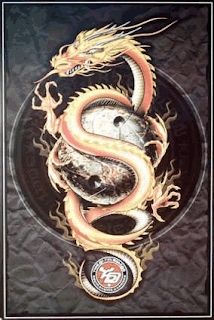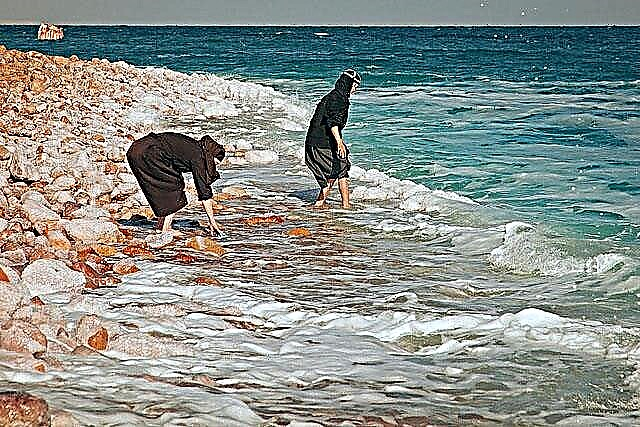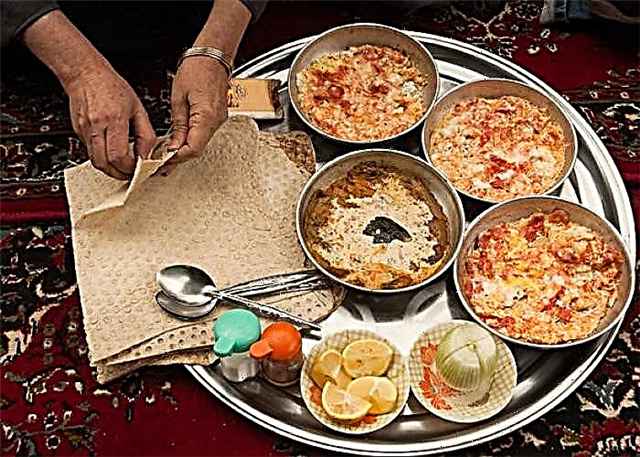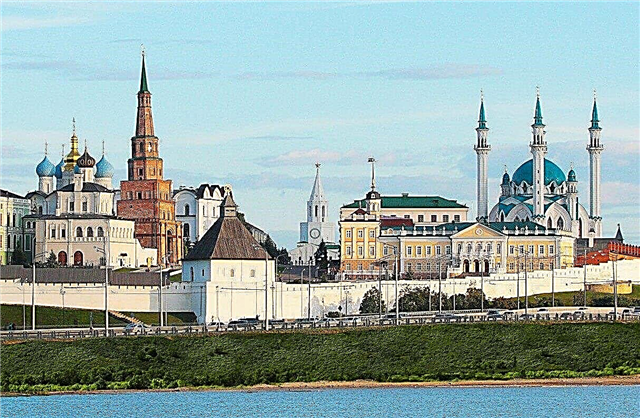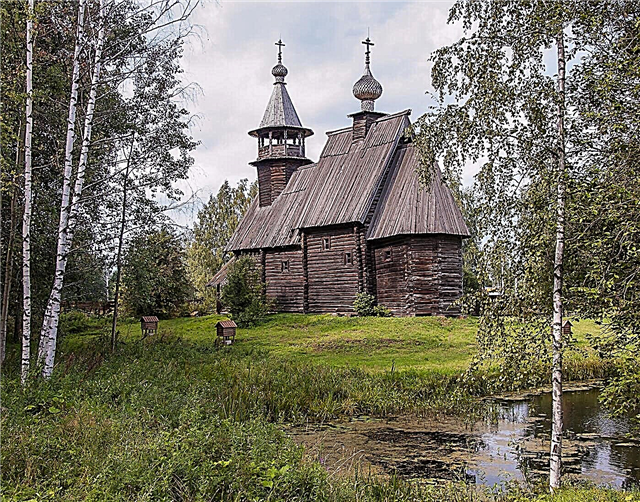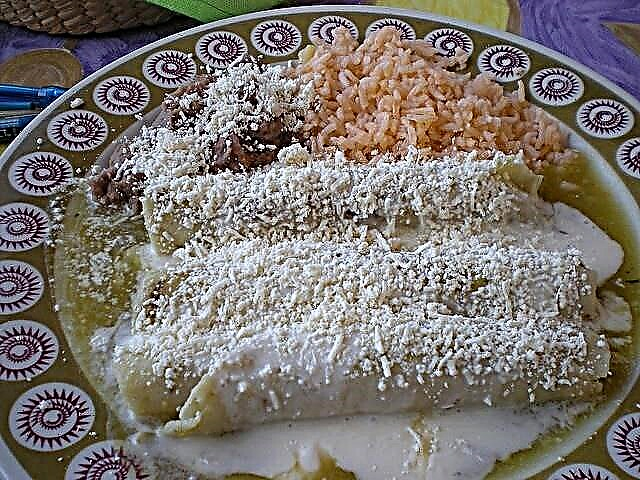The first castles in Denmark date from the Romanesque era. In the XIII-XVI centuries, the Romanesque era gave way to the Gothic. Spottrup Castle is a characteristic structure of that period. The Renaissance gave Denmark the unique creations of the Egesques and Kronborgs. The Renaissance gave way to the Baroque and the unique Klausholm remained in the history of the country.
During the period of classicism and rococo, luxurious royal residences were created. It was during this era that Fredensborg appeared. Denmark is the cradle of the oldest monarchies. The country's history, rich in legends and dramas, weddings and wars, is preserved in castles, fortresses and estates. There are more than six hundred of them on the territory of Denmark. Most of the castles still belong to the royal family. But there are many who have opened their halls to the general public.
The most interesting and beautiful castles in Denmark
List, photos with names and descriptions of medieval fortresses and castles!
Frederiksborg
Castle in the town of Hellerød. Founded in 1560 as a royal residence. The luxurious Renaissance palace was built on three islands. Coronations of monarchs were held here, meetings of orders of knights were held. In 1859, the palace was practically destroyed by fire. Restored by 1882. Since that time, the National Historical Museum has been functioning here. Open to the public all year round.

Kronborg
Castle in Elsinore. From 1420 on this place was the Krogen fortress. Its strategic location made it possible to collect duties from ships that left the Baltic Sea. Later in 1785 the castle was rebuilt in the Renaissance and Baroque style. It is in this castle that the actions of the play "Hamlet" by W. Shakespeare unfold. Open to the public. Of interest are the interiors of the castle, the Great Ballroom, catacombs and cellars, with which many legends are associated.

Egeskov
Castle in Odense in the south of the island of Funen. Built in 1554. Originally built for defensive purposes. The castle stands literally on the water on oak piles. In 1883, during the restoration work, a power station, a dairy farm, and a railway were added to the buildings. The castle is surrounded by a picturesque park with manicured lawns and labyrinths. There is an English garden, a Renaissance garden, a garden of smells, a fuchsia garden. The castle is open to the public from May to September.

Rosenborg
Castle on the outskirts of Copenhagen. Built in 1624 in the Dutch Renaissance style. Former royal residence. It was also used for official receptions. One of the castles, preserved in the course of history in its original state. The park area of the castle deserves special attention. This is almost 5 hectares of well-groomed territory with alleys, Italian sculptures, fountains and columns. Rosenborg Castle and Gardens are open to the public.

Rosenholm
Castle in central Jutland. Founded in the XIV century. It was later rebuilt in the style of the Italian Renaissance. One of the oldest family castles. The ancestors of the powerful Rosenkrats dynasty lived here for almost five centuries. Around the castle there is a small atmospheric baroque park. Now the castle has a triple museum with interiors of the 16th-17th centuries. Concerts, wedding ceremonies and official events are held here.
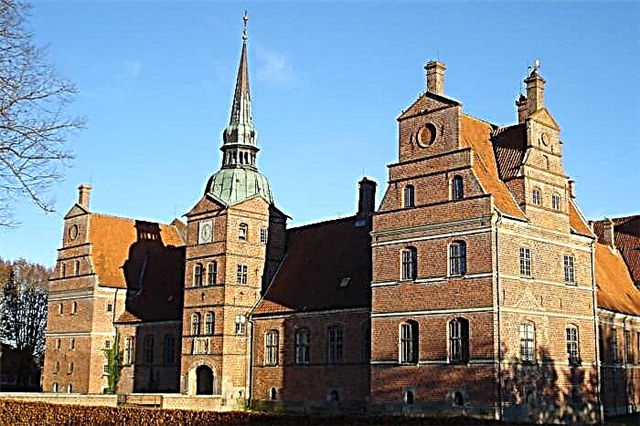
Gammel Estrup
Castle in the town of Arhus in East Jutland. Built in 1490. Gothic and Renaissance red stone structure. Gardens and greenhouses are laid out around the castle. Since 1930, the castle houses a museum. The interiors recreate the atmosphere and life of a traditional family estate that reigned here more than six centuries ago. Of particular interest are details and rooms not found in other castles, such as the kitchen and servants' quarters.

Voergaard
Castle in North Jutland. The Renaissance building dates back to 1480. The powerful walls of Voergaard have repeatedly saved the local population from enemy raids. Throughout its history, the castle has repeatedly passed from hand to hand. One of the owners of the castle in the 16th century was a woman. It was very unusual for that time. All legends about Voergaard's ghosts are associated with this period. In 1955, the castle underwent a large-scale reconstruction and is now open to the public.

Spottrup
Castle in North Jutland near the town of Skive. The first mentions date back to 1404. This is a classic medieval castle. The architecture is quite simple and functional. The rampart and double moat were used for defensive purposes. The castle had many owners. After a fire in 1937, it became the property of the state. It was restored in the middle of the 20th century. Now the castle is surrounded by a park with a rose garden and a unique collection of medicinal herbs. Open for visits.

Koldinghus
The castle was built in the 13th century. by order of King Eric V. Originally built for defensive purposes. After reconstruction in the 16th century, the fortress became the first residential royal residence in Denmark. After a fire in 1808 and until the end of the 19th century, the castle remained in ruins. The writer G. H. Andersen played an active role in the preservation and protection of the ruins. The restoration began in 1890. Now the restored castle works as a museum.

Sonnerborg
Castle in the south-east of Jutland on the island of Als. Founded in 1158. This defensive structure at different times was for the royal persons of Denmark and protection from enemies, and a luxurious residence, and a prison. The castle was rebuilt several times, changing its appearance. A thorough reconstruction of the castle was carried out in 1973. Now there is a museum here; official events, business meetings and wedding ceremonies are held in the ceremonial halls.

Nyborg
Fortress on the island of Funen. Built in 1170 on the shore of the Great Belt as a defensive outpost. Throughout history, the fortress has been the royal residence and seat of the Danish parliament. The first Constitution of the country was signed here. After the war with the Swedes in 1657-1658, the castle was badly damaged. It began to be restored already in the 20th century. Now the medieval fortress functions as a museum. Open for visits from April to October.

Valleux
A castle in the Stevns commune on the Zeeland island near the town of Køge. The first mentions date back to 1256. Since the 15th century, it has been owned mainly by women. Since 1737, the Valle Diocese was created in the castle, within the walls of which girls of high society began to live and receive education. And now the castle is the property of the diocese. Around the castle there is a picturesque park with lakes, lawns and century-old trees. The castle is open for inspection only from the outside, the park and the forest around the park are freely accessible.

Dragsholm
Castle in the valley of the town of Hörve. Built in 1215. Belonged to the clergy. In the Middle Ages, it was rebuilt into a defensive structure. Later it became the property of the royal family. It began to be used as a prison for high-ranking officials. After the end of the devastating wars, the castle ended up in private possession. It was rebuilt and now looks more like an old mansion. According to legend, about 100 ghosts live in the castle. Today there is a hotel here.

Hammershus
Castle in the north of the island of Bornholm. Built in 1250 on a hill. For a long time it was one of the most important defensive structures in Europe. Later it was the seat of the governor and the state prison. Since 1743 it has been abandoned and gradually destroyed. Restoration work on the restoration of the castle began at the end of the 19th century and is not yet fully completed. Access to the castle is free during the warmer months.

Clausholm
Castle in East Jutland at the mouth of the Gudeno River. It was first mentioned in the XIV century as a defensive structure. In 1690, it was rebuilt by a new owner. Since that time, the castle has become an elegant family estate in the Baroque style. The tragic love story of King Frederick IV and the daughter of the Chancellor Anne is associated with him. The castle is now privately owned.During the summer months, the family of the owners lets visitors into their property at certain times.
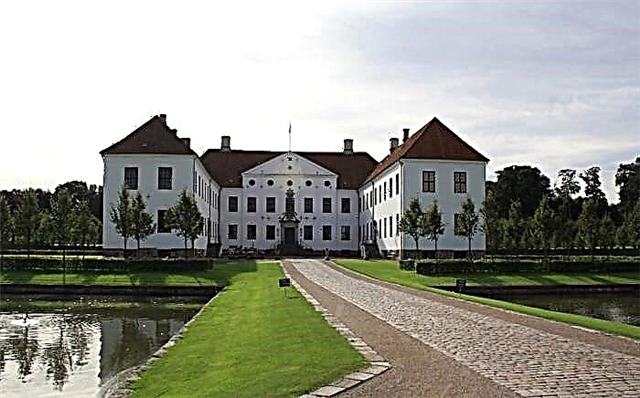
Shit
Castle in Nestved commune in the south of Shit Island. Built as a fortification defensive structure to protect the southern coast of Denmark. Later, a Dominican monastery was founded here. The Rococo castle, whose appearance is known today, was created in 1737 by Count Otto Tott. He also collected a unique collection of paintings and a rare collection of books and manuscripts. At the same time, a park with rare varieties of trees was laid out around the castle. The Count's descendants still live in the castle.

Holkenhavn
Renaissance castle on the east coast of Funen Island. Located next to the Holkenhavn fjord south of Nyborg. Built at the end of the 16th century, it got its name in 1672, when it was acquired by Euler Holk. His descendants still live in this place. The castle was rebuilt and restored several times. The castle park is now open to the public. The castle is rented for private parties, conferences, weddings.

Yegerspris
Castle near Frederikssund. Since the XIV century it has been the seat of the crowned heads of Denmark. The castle was used by the monarchs as a hunting lodge and summer residence. In 1863 it became Denmark's first orphanage. The widow of King Frederick VII, Countess Danner, adapted part of the palace as a shelter for homeless girls. The castle is now open to the public. Here you can see the original interiors from 1850. Sculptures of famous people of Denmark have been installed in the palace park since 1770.
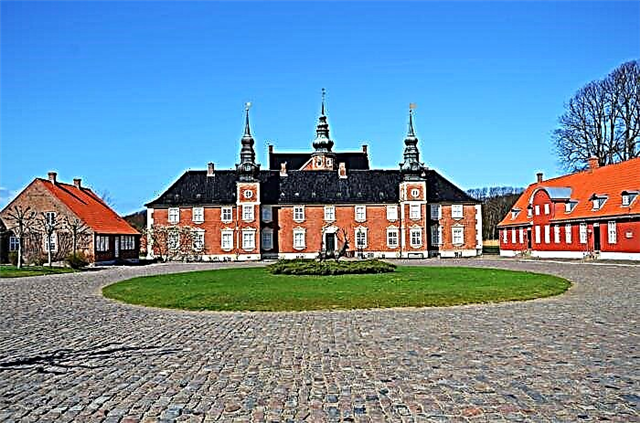
Borrebi
Castle in the municipality of Slagelse in the southwest of the island of Zealand. The first mentions date back to 1345. It belonged to the diocese, then became private property. The majestic red brick manor has passed from one noble family to another over the centuries. The castle was a source of inspiration for the writer G. Andersen, who was a frequent visitor here. The castle houses a collection of exquisite tapestries and antique furniture.

Valdemar Castle
Castle in the commune of Svennborg. Built in 1644 by King Christian IV for his son. One of the luxurious palaces of that time was badly damaged in the war with the Swedes. Later, the new owner, the famous Admiral Niels Huel, rebuilt the castle in the Baroque style. This is how it looks to this day. The admiral's heirs still live here. However, the premises of the castle are open to the public. It is worth seeing the library and walking to the sandy beach at the south gate.

Ulstrup
A castle in the small town of Ulstrup, 20 km southwest of Randers. Built at the end of the XIV century. A classic medieval manor house. It was rebuilt several times with the emergence of new owners. Since 1980, the castle has been completely restored. Available for visits by agreement with the owners. In the summertime, fairs, art exhibitions and pottery master classes are held in the castle's park area.

Aalborghus
Castle in North Jutland at Aalborg. Built in 1539 by King Christian III as a defensive fort. Later, the residence of the governor of the king was located here. This is a classic example of a half-timbered structure with three floors of wood and stone. Differs in simplicity and grace. The castle has not suffered in the course of history and has survived to this day in its original form. It still belongs to the royal family today. Open for visits.

Engelholm
Castle on the shore of the lake of the same name. Built in 1592. The design of the castle was reminiscent of Annecy-le-Fran in Burgundy. In 1730 Engelholm was rebuilt. Rectangular shapes were crowned with characteristic domes, and a French-style park was laid out. In 1952, the castle burned down, but was quickly rebuilt. Nowadays it is a closed private school. The castle interiors are closed to the public. In summer, classical music concerts are held here.

Nordborg
Castle in the town of the same name on the island of Alsa. The first mentions date back to 1150. Built on the south side of the Nordboga lake in the Baroque style. The white building with red tiles looks spectacular at any time of the year. Throughout its history, the castle changed owners, burned, resisted sieges and was rebuilt. It was restored at the beginning of the 20th century. Currently, a boarding school is located in the castle building. Free access is available only to the castle park.

Hvedholm
Castle on the southern coast of Funen Island near the city of Foborg. Built in the 15th century. After a fire in 1778, almost all buildings were destroyed. Only in 1882 a new castle was erected on this site. Its large windows offer beautiful views of Lake Geneva. A huge park with lakes and unique trees is laid out around the castle. It is privately owned. Since 1996, the owners have set up an expensive hotel in the castle.
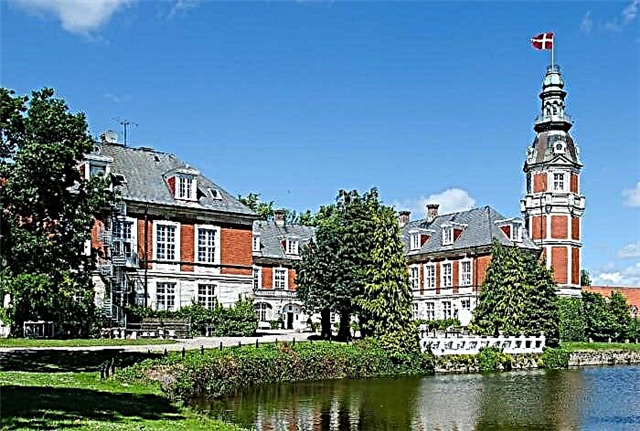
Olholm
Castle in the southern part of Lolland Island. Built in 1200 on a small island. This fortification is one of the oldest in Denmark. Since its inception, it has belonged to the royal family. Since 1725 it passed into private ownership. The pride of the owners of the castle was at one time the automobile museum. In 2012, the museum was closed, unique pieces were put up for auction. The picturesque surroundings of the castle are famous for hunting.

Gersleeve
Castle in the municipality of Stevns, near the town of Køge. Built in 1400. One of the best-preserved Gothic castles in Denmark. Initially, the castle was owned by the diocese, later the owners changed several times. Currently privately owned. By agreement with the owners, the castle can be visited as part of a guided tour. Since the old part of the castle is not heated in winter, events are held here only in the summer season.

Vordingborg
Castle on the island of Zealand in the city of the same name. Built in 1160. Used for military purposes. In 1360, another ruler expanded the fortification and turned it into one of the largest castles in Denmark. Nine observation towers were surrounded by a high fortress wall. In the 17th century, the castle was destroyed by the Swedes. Currently, only one tower has survived from the castle. The tower is called Goose.
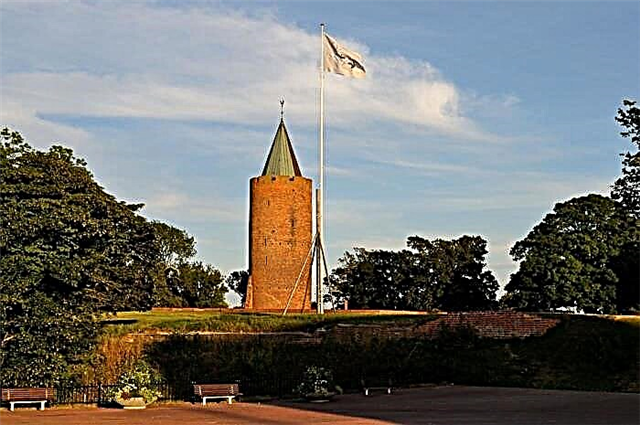
Kalyo
Castle on the east coast of Jutland. It was built in 1313 by King Eric. It was a powerful defensive structure, very modern at that time. Throughout its history, the castle has changed many owners, for a long time it was a prison. The most famous prisoner of Kalö was the Swedish king Vasa. Nowadays, only picturesque ruins remain from the castle.

Fortress Kastellet
Located in Copenhagen. Built in the 17th century by King Christian IV. The star-shaped five-pointed shape of the citadel made it possible to hold the defense for a long time. This place is still a functioning military facility. There are no towers or stone walls here, there is a moat and high embankments with medieval cannons. On the territory of the fortress there are garrison barracks, a church, warehouses, a mill and a prison.


